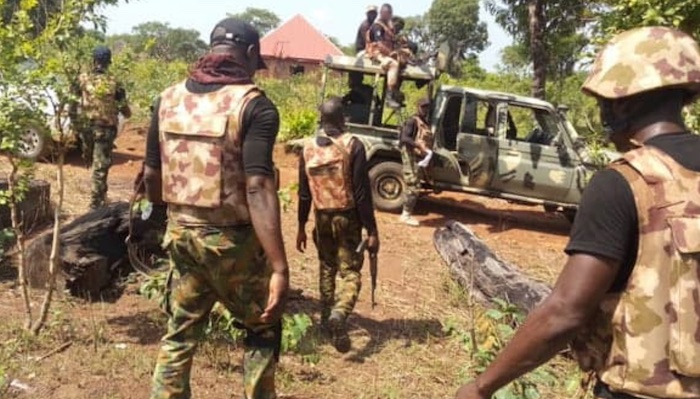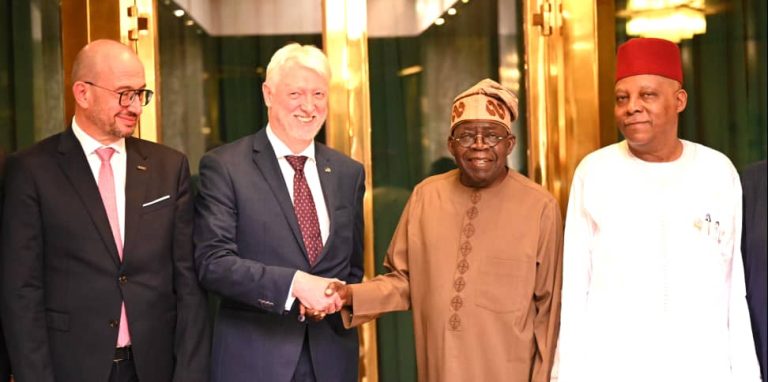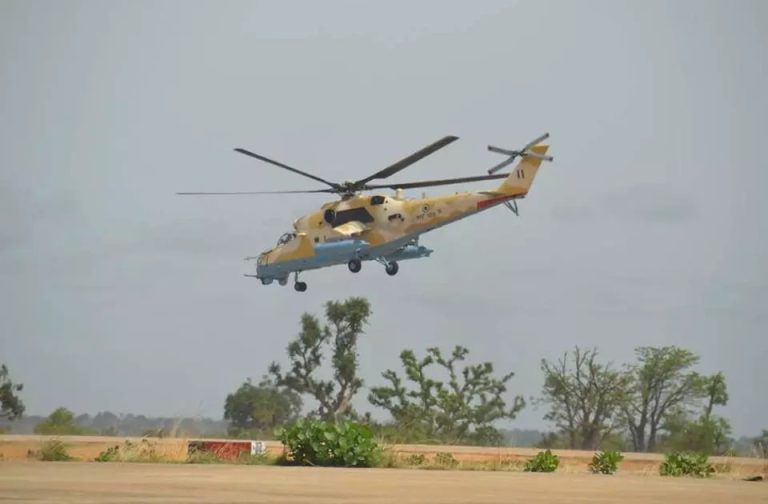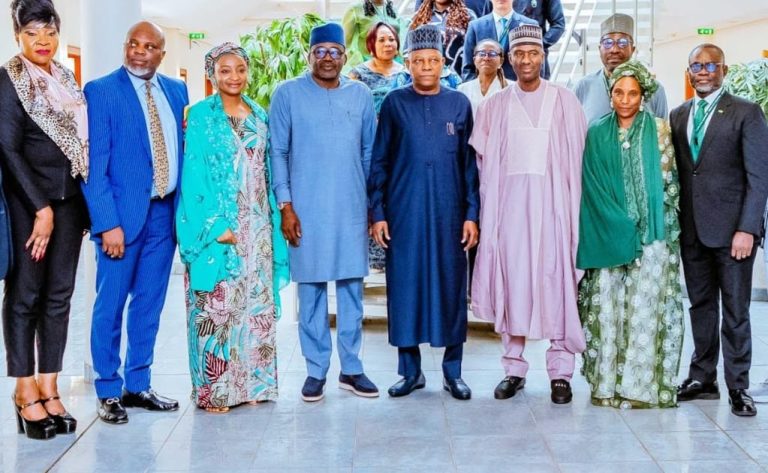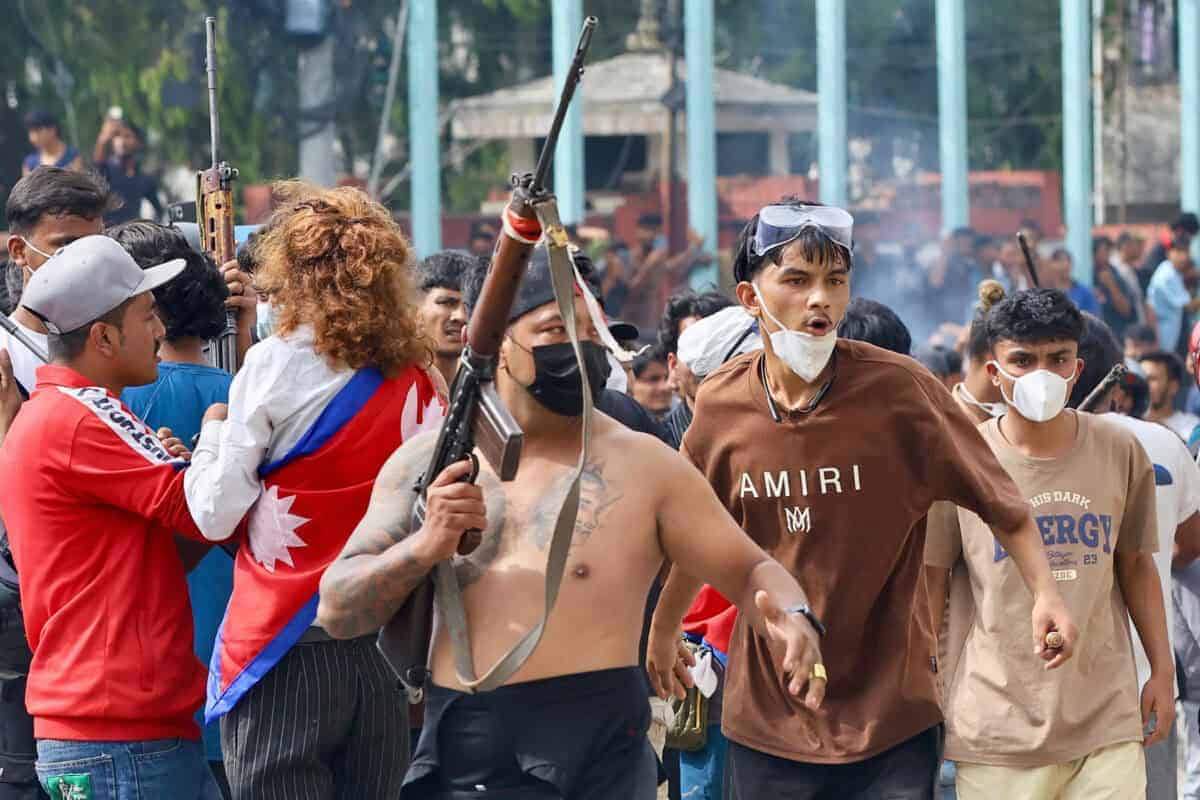
A protester carries a firearm as demonstrators gather outside the Singha Durbar palace complex during a protest to condemn the police's deadly crackdown on demonstrators in Kathmandu on September 9, 2025, a day after demonstrations over social media prohibitions and corruption by the government. Nepal rolled back its social media ban on September 9, a day after at least 19 people were killed in youth protests demanding that the government lift its restrictions and tackle corruption. Protests continued on September 9, defying a curfew to vent anger at one of the deadliest crackdowns on demonstrators for years -- despite all major social media apps resuming operations online and the government appealing for calm. (Photo by Prabin RANABHAT / AFP)
Nepal’s police have arrested 423 people accused of crimes ranging from murder to vandalism during a deadly mass uprising in September that toppled the government, according to police data released on Monday.
Suspects also face charges that include the illegal possession and use of weapons, as well as theft and indecent behaviour, the data showed.
“A team is looking into the incidences and we are working to collect information,” Nepal police spokesman Abi Narayan Kafle said.
76 killed in youth-led uprising
Youth-led protests that rallied under the loose umbrella title of “Gen Z”, referring to those aged under 28, erupted on September 8 after a government ban on social media.
The movement was more broadly fuelled by economic hardship and growing anger over corruption.
Protests then morphed into nationwide fury, culminating in the collapse of the government as crowds torched parliament and the Supreme Court.
At least 76 people were killed in two days of violence, according to a new police toll, including 63 protesters, 10 escaped prisoners and three police officers.
Thousands of activists used the group-chat app Discord in the aftermath of the uprising to nominate 73-year-old former chief justice Sushila Karki as their preferred interim leader.
ALSO READ: Nepal PM resigns after deadly protests sparked by social media ban
She was then appointed prime minister until elections due in March 2026.
Arrests have taken place since the unrest but the police data issued on Monday gave the first indication of the scale of the detentions.
Chaos, prison escapes and travel bans
More than 2 700 structures were attacked across Nepal, including government buildings, police stations, hotels, businesses, party offices and the houses of politicians. Supermarkets, stores and private residences were also looted.
Some protesters were seen brandishing rifles on the second day of the unrest, weapons that were allegedly seized from the police.
Around 14 500 detainees also escaped from prisons nationwide during the chaos. Authorities say 5 020 remain at large.
Home Minister Om Prakash Aryal said on Saturday a special operation would be launched to recapture the escapees and recover looted weapons.
Representatives of Gen Z protest groups have demanded Aryal’s resignation, accusing him of failing to hold accountable those responsible for the deadly crackdown on young demonstrators.
The government has imposed travel bans on former prime minster KP Sharma Oli and four former senior officials as a commission investigates the unrest.
NOW READ: New youth-led protests in Madagascar despite government’s dismissal
